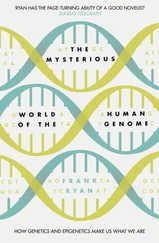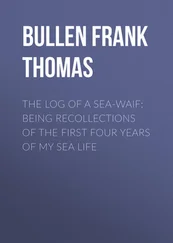It was getting on for ten o'clock when the nausea worsened and was coupled with a headache. Then Jérôme noticed he was losing concentration. He had omitted to put the finishing touches to one of the dishes, and had forgotten to tell his apprentice what to do next.
Jean Jérôme was enough of a professional to know when to pull the plug. He was feeling truly awful. He handed responsibility to his deputy, an ambitious and talented chef who'd learned her trade in Paris under Ducasse. He was just popping outside, he told her. The kitchens backed on to the garden: when the weather was good, diners were taken there on arrival and served their aperitif with canapés. Later they were led into the restaurant through the kitchens, catching a glimpse of the proceedings and sometimes a demonstration by a chef. Right now the discreetly lit garden was deserted.
For a few minutes Jérôme paced up and down. Through the large windows he could still see the bustle of the kitchens, but he was having trouble focusing for more than a few seconds at a time. He couldn't get enough air, and there was a weight on his chest. His legs felt like jelly. He sat down at one of the wooden tables. His thoughts returned to the events of that morning. His hair and face had been splattered with the lobster's insides. He was sure he must have inhaled a bit or swallowed some fluid. He'd probably caught a drop on his tongue when he licked his lips.
Perhaps it was the thought of the lobster, but before he knew it, he was vomiting violently over the plants. As he sat there, bent double, retching and choking, he thought it was probably for the best. At least he'd got rid of it. Now all he needed was a glass of water, and he'd feel much better.
He dragged himself to his feet. His head spun. His forehead was burning and he was gazing into a spiral. He sat down again. You've got to get up, he told himself You need to check that things are all right in the kitchen. It was vital that nothing went wrong. This was Troisgros, after all.
He managed to stand up and take a few dragging steps, then darkness overwhelmed him.
Vancouver Island, Canada
Anawak could feel his eyes reddening and swelling, while the skin round them creased. Struggling to keep his head upright, he stared at the monitor. Ever since Canada's west coast had been plunged into chaos, his eyes had barely left the screen, yet he'd sifted only a fraction of the data – electronic evidence that owed its existence to one of the most groundbreaking inventions in animal behavioural science. Telemetry.
In the late 1970s, scientists had come up with a revolutionary new method for monitoring animals. Until then there had been no accurate means of collecting data on a species' distribution or its patterns of migration. How animals lived, hunted and mated, what they needed or wanted were all matters of speculation. Of course, thousands of animals were being watched around the clock – but almost always under circumstances that made it impossible to predict how they would normally behave. Monitoring an animal in captivity was like observing a man behind bars: there was no way of telling how it lived when it was free.
But attempts to observe animals in their natural habitat were similarly unsuccessful. The creatures either took flight or failed to show up in the first place. Animals tended to see more of the scientists than the scientists did of them. Some of the less timid species – chimpanzees or dolphins, for example – put on shows for their observers, displaying aggression or curiosity, and sometimes even flirting or striking a pose, making objective conclusions all but impossible to reach. Once they'd tired of performing, they'd disappear into the jungle, take off into the sky or dive into the depths, where they'd resume their natural behaviour – except no one could see them.
It was the mystery that biologists from Darwin onwards had been longing to solve. How could we understand the ability of fish and seals to survive in the cold dark waters of the Antarctic? How could humans see inside a biotope that was sealed with layers of ice? What would the Earth look like from the sky, if we crossed the Mediterranean on the back of a goose? How did it feel to be a bee? How could we measure the speed of an insect's wings and its heartbeat, or monitor its blood pressure and eating patterns? What was the impact of human activities, like shipping noise or subsea explosions, on mammals in the depths? How could we follow animals to places where no human could venture?
The answer came in the form of a technology that allowed haulage companies to locate each of their lorries, and helped drivers to pinpoint streets in towns they'd never seen. It was a modern invention that everyone knew and used, without realising that it would revolutionise zoology: telemetry.
In the late 1950s, US scientists had already started to develop ways of electronically tagging animals. Not long afterwards the US Navy was using the technology on trained dolphins, but the experiment failed because the tags were too heavy: it was no good hoping to gain accurate information on dolphins' natural behaviour from tags that affected their movements. The initiative ground to a halt, but the invention of the microchip heralded a breakthrough. In no time ultra-light cameras and tags the size of chocolate bars were being used to transmit relevant data from the wild. The animals carried on as normal, roaming through the rainforests or swimming through the pack-ice in McMurdo Sound, unaware of the fifteen grams of equipment they were carrying. At long-last grizzly bears, dingoes, foxes and caribous were divulging their secrets. Scientists were initiated into their ways of life, mating rituals, hunting habits and migration patterns. They could even fly across the world in the company of white-tailed eagles, albatrosses, swans, geese and crows. At the cutting edge of technology, insects were fitted with miniature devices that weighed a thousandth of a gram and were powered by radar waves. They could send back their signal at double the frequency, allowing the data to be received from distances of more than seven hundred metres.
Most of the tracking was done by satellite. The system was as simple as it was ingenious. The signal from the transmitter was sent into space, where it was received by ARGOS, a satellite-based system run by the French space agency CNES. From there it was transmitted to headquarters in Toulouse and on to a terrestrial station in Fairbanks, USA, for forwarding to other institutions worldwide. The data reached the end-user in less than ninety minutes.
Research into whales, seals, penguins and turtles soon developed into a distinct field of telemetry. The planet's least-known and most fascinating habitat was opened up to view. Data could be recorded at considerable depth on ultra-light transmitters, which registered temperature, length of dive, distance from the surface, location, direction of travel and speed. Frustratingly the signals could only be received from the water's surface, which meant that ARGOS was blind where the depths were concerned. Humpbacks spent a good deal of their lives within a few kilometres of the Californian coast, but surfaced for an hour a day at most. While ornithologists could see and monitor a stork in flight, marine scientists were cut off from their subjects while they were under water. For a complete understanding of marine mammals, they needed cameras that kept rolling at all times – but the Pacific was too deep for any diver, and submersibles lacked the necessary agility and speed.
Eventually the solution came from scientists at the University of California in Santa Cruz, who invented a tiny, pressure-resistant underwater camera. They tried the device on an elephant seal and some Weddell seals and finally a dolphin. In no time they came across the most amazing phenomena. Within a few weeks their understanding of marine mammals was transformed. If only whales and dolphins had proven as easy to tag as other animals, everything would have been perfect. Instead it was virtually impossible. So Anawak was left with far less data than he would have liked – yet at the same time he had more than he could handle. Since no one knew what was important, every piece of information was significant – and that meant evaluating thousands of hours of images, audio recordings, readings, analyses and stats.
Читать дальше












